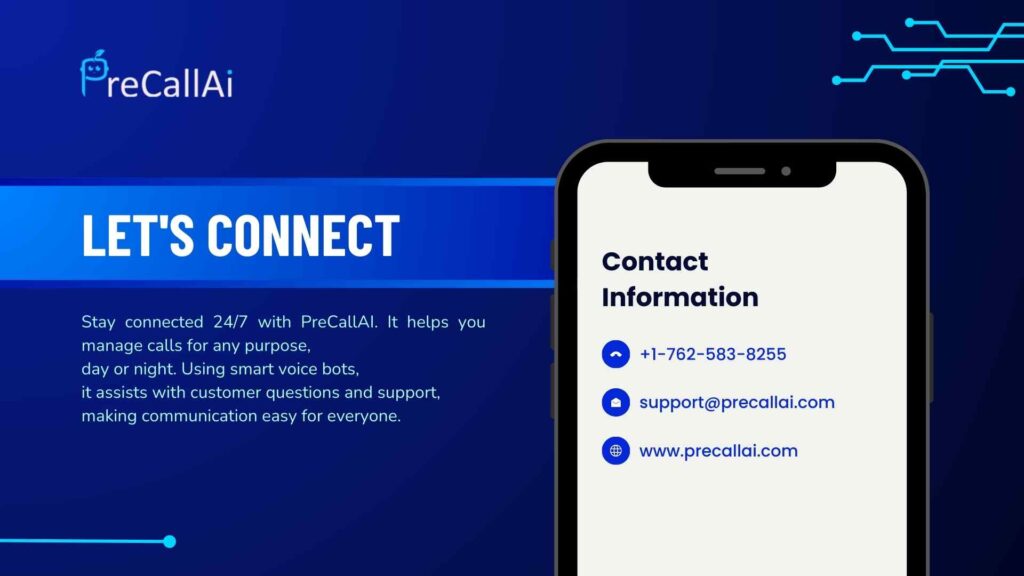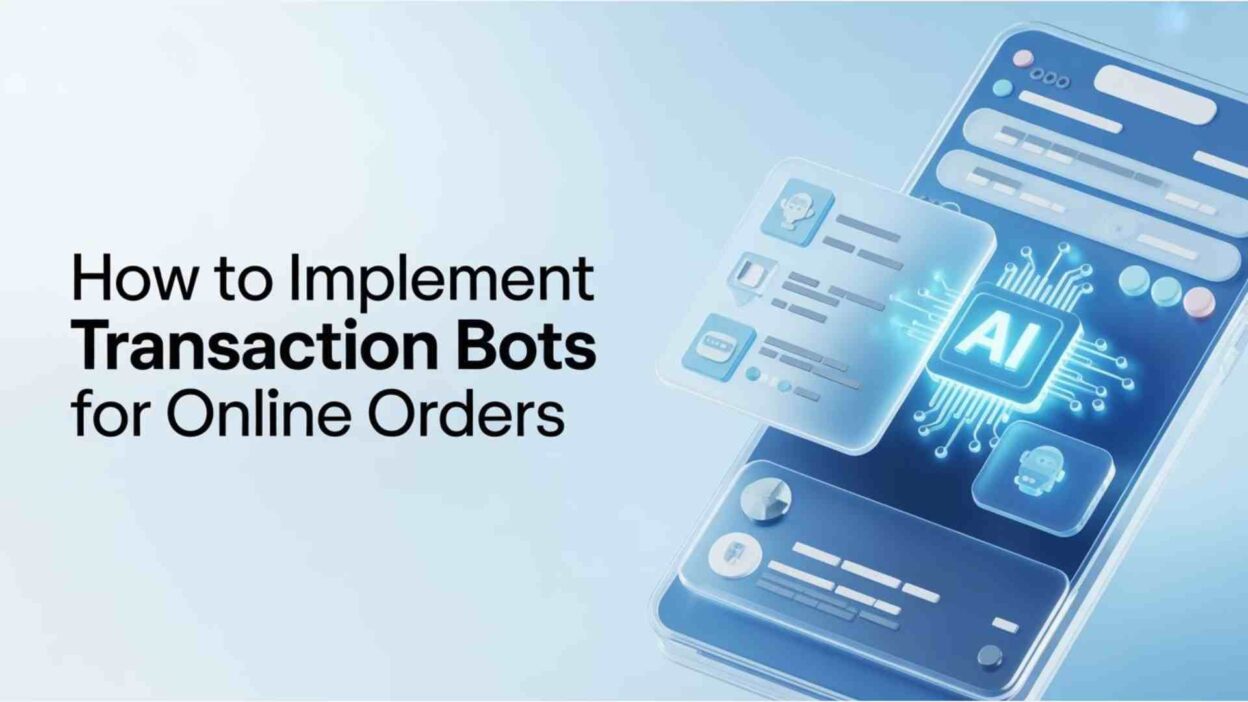TL;DR Online shopping demands speed and convenience. Customers expect instant responses. They want quick checkout processes. They need immediate order confirmations. Traditional customer service cannot meet these demands. Human agents cannot work around the clock. Manual order processing creates delays. Customers abandon carts during complicated checkouts.
Table of Contents
Businesses lose revenue through inefficiency. Transaction bots solve these problems effectively. They automate the entire ordering process,handle customer inquiries instantly,process payments securely. Learning how to implement transaction bots for online orders has become essential for modern businesses.
Understanding Transaction Bots in E-Commerce
E-commerce technology evolves constantly. Businesses must adapt to stay competitive. Automation drives modern online retail. Transaction bots represent the cutting edge of this automation. They transform how businesses handle online sales.
What Are Transaction Bots
Transaction bots are automated software programs. They handle purchasing conversations with customers, guide buyers through product selection, answer questions about items, process payment information securely,confirm orders instantly, send receipts and tracking information. All of this happens without human intervention.
Modern transaction bots use artificial intelligence. They understand natural language from customers. Shoppers type questions in their own words. Bots comprehend the meaning accurately. They provide relevant product recommendations, upsell complementary items intelligently, create personalized shopping experiences.
Integration makes transaction bots powerful. They connect to inventory systems directly,know which products are in stock. Access pricing information in real time.
When you implement transaction bots for online orders, you create seamless shopping experiences. Customers interact through familiar messaging platforms. They shop via Facebook Messenger or WhatsApp,order through website chat interfaces, purchase through mobile apps. The shopping experience feels natural and effortless.
Transaction bots remember customer preferences. Returning shoppers receive personalized greetings. The bot recalls previous purchases. It suggests related products based on history. It remembers shipping addresses and payment methods. Repeat ordering becomes incredibly simple.
Why Businesses Need Automated Ordering Systems
Customer expectations have shifted dramatically. People demand instant gratification. Human customer service cannot meet these expectations. Businesses must automate or lose customers.
Cart abandonment costs businesses billions annually. Complicated checkout processes frustrate shoppers. Unexpected shipping costs surprise buyers. Long forms deter completion. Payment errors cause frustration. Transaction bots eliminate these friction points. Checkout becomes quick and simple. Abandonment rates drop significantly.
Operational costs strain business profitability. Hiring customer service staff is expensive. Training new employees takes time. Managing shifts creates scheduling challenges. Employee turnover disrupts service quality. When you implement transaction bots for online orders, you reduce these costs dramatically. Bots work continuously without breaks. They never call in sick. They handle unlimited simultaneous conversations.
Sales opportunities get missed constantly. Customers browse during off-hours. They have questions nobody answers. They move to competitor sites. Businesses lose sales unnecessarily. Transaction bots capture these opportunities. They engage customers anytime. They convert browsers into buyers. Revenue increases measurably.
Data collection improves with automation. Transaction bots track every customer interaction. They record common questions, identify popular products,reveal shopping patterns. Businesses gain valuable insights. Marketing strategies improve with better data. Product development responds to customer needs.
Global commerce requires multilingual support. Customers speak different languages. Hiring multilingual staff proves expensive. Translation services add complexity. Transaction bots handle multiple languages naturally. Spanish speakers get Spanish responses. French customers receive French service. Global expansion becomes more affordable.
Essential Features When You Implement Transaction Bots for Online Orders
Not all transaction bots deliver equal value. Critical features separate effective bots from mediocre ones. Understanding these features guides smart purchasing decisions.
Payment Processing Capabilities
Secure payment handling is absolutely essential. Transaction bots must process credit cards safely. They must accept digital wallets,need to handle PayPal transactions. should support Apple Pay and Google Pay. Payment flexibility matters to customers. More options increase conversion rates.
PCI compliance protects customer data. Payment card industry standards require strict security. Transaction bots must meet these standards. Encryption protects payment information. Tokenization adds another security layer. Customers trust businesses that protect financial data.
Payment confirmations happen instantly. Customers receive immediate purchase verification. Receipts arrive via email automatically. Order numbers appear in chat instantly. Customers can screenshot confirmation details. Anxiety about successful payment disappears.
Failed payment handling needs careful design. Declined cards happen frequently. Insufficient funds cause failures. Expired cards create problems. Transaction bots must handle these situations gracefully. They should suggest alternative payment methods, should save cart contents, should make retrying simple.
Refund processing should work automatically. Customers request refunds occasionally. The bot should check refund eligibility. It should process approved refunds immediately. It should update order status correctly. Automated refunds improve customer satisfaction.
Order Management Integration
Inventory systems must connect to transaction bots. Real-time stock levels prevent overselling. Bots know exactly what is available. They never sell out-of-stock items. Customers avoid disappointment. Businesses avoid fulfillment problems.
Order tracking integration keeps customers informed. Bots provide tracking numbers automatically. They update shipping status proactively, notify customers of delivery dates, alert about delivery delays. Cust+omers stay informed throughout shipping. Support calls decrease significantly.
Product catalogs sync automatically. New products appear immediately. Price changes update instantly. Product descriptions stay current. Images refresh when updated. Manual catalog management becomes unnecessary.
When you implement transaction bots for online orders, order routing must work intelligently. Different warehouses hold different inventory. Drop shippers fulfill certain products. The bot should route orders optimally. Shipping costs are minimized. Delivery times improve. Efficiency increases across operations.
Return management needs automation. Customers initiate returns through the bot. The bot checks return eligibility. It generates return shipping labels,provides return instructions,processes refunds upon receiving items. Return hassles decrease dramatically.
Security and Fraud Prevention
Fraud detection protects businesses and customers. Transaction bots should analyze purchasing patterns. Unusual orders trigger additional verification. Multiple failed payment attempts raise flags. Suspicious shipping addresses require review. Automated fraud detection prevents losses.
Customer verification adds security layers. Bots can request additional authentication. They can require phone number verification, can send confirmation codes,can check billing address accuracy. Legitimate customers pass through easily. Fraudsters face obstacles.
Data privacy compliance is legally required. GDPR protects European customers. CCPA protects California residents. Other jurisdictions have their own requirements. Transaction bots must respect privacy laws. They must obtain proper consent. They must allow data deletion. Compliance prevents legal problems.
Session security prevents unauthorized access. Encrypted connections protect data transmission. Session timeouts prevent abandoned device access. Re-authentication protects sensitive operations. Security measures operate invisibly. Customers feel safe shopping.
Step-by-Step Guide to Implement Transaction Bots for Online Orders
Successful implementation follows a structured process. Careful planning prevents costly mistakes. Each step builds toward successful deployment.
Planning and Requirements Assessment
Business goals must drive bot implementation. Some businesses want reduced support costs. Others prioritize increased sales. Some focus on customer satisfaction. Clear goals guide design decisions. Success becomes measurable.
Customer journey mapping reveals opportunities. Study how customers currently shop. Identify friction points in purchasing. Find where customers ask questions. Discover where they abandon carts. Transaction bots should address these specific issues.
Budget planning ensures adequate resources. Bot platforms cost money. Development requires investment. Integration takes time and expertise. Ongoing maintenance needs funding. Realistic budgets prevent project failure.
Technical capabilities assessment is crucial. Evaluate your current technology stack. Identify existing integrations needed. Determine technical expertise available. Decide between build versus buy. Technical readiness affects timeline.
Stakeholder buy-in enables success. Sales teams must support the bot. Customer service must embrace automation. IT teams must commit resources. Management must champion the project. United support accelerates implementation.
Choosing the Right Platform
Many platforms help you implement transaction bots for online orders. Popular options include ManyChat, Chatfuel, and MobileMonkey. Enterprise solutions come from Salesforce and Oracle. Each platform offers different capabilities. Selection depends on specific needs.
Platform capabilities must match requirements. Some platforms excel at simple transactions. Others handle complex purchasing workflows. Some integrate with specific e-commerce platforms. Others work universally. Evaluate capabilities carefully.
Pricing models vary significantly. Some platforms charge per conversation. Others have monthly flat fees. Some take transaction percentages. Enterprise platforms charge annually. Total cost of ownership matters more than initial price.
Integration capabilities determine usefulness. The platform must connect to your e-commerce system. It should integrate with payment processors,needs to access inventory data, should connect to CRM systems. Easy integration saves development time.
Scalability ensures future growth. Your business will expand. Order volumes will increase. The platform must handle growth. Performance should remain consistent. Scalability prevents future migration.
Support quality affects long-term success. Technical problems will occur. Questions will arise. Good vendor support resolves issues quickly. Check support availability. Read customer reviews. Support quality varies dramatically between vendors.
Technical Integration Process
API connections link systems together. Your e-commerce platform provides APIs. The transaction bot uses these APIs. Data flows between systems automatically. Technical expertise enables smooth integration.
Authentication secures API connections. API keys control access. OAuth tokens provide authorization. Security protocols protect data. Proper authentication prevents unauthorized access.
Data mapping ensures information flows correctly. Product IDs must match between systems. Price fields must align properly. Inventory counts must sync accurately. Customer data must map correctly. Careful mapping prevents errors.
Webhook configuration enables real-time updates. Inventory changes trigger immediate updates. Order status changes notify the bot. Payment confirmations update both systems. Webhooks keep everything synchronized.
Testing catches problems before launch. Test every transaction scenario. Try different product combinations. Attempt various payment methods. Test error conditions deliberately. Thorough testing prevents customer-facing problems.
Testing and Deployment
Beta testing reveals real-world issues. Select trusted customers for testing. Monitor their experiences closely. Gather detailed feedback. Fix discovered problems. Iterate until satisfaction is high.
Phased rollout minimizes risk. Start with a small customer segment. Monitor performance carefully. Expand gradually to more customers. Full deployment happens only after proven success. Problems affect fewer customers this way.
Staff training prepares the team. Customer service needs training on the bot. They must know what it can handle,must know its limitations,should know how to escalate. Training ensures smooth collaboration between humans and bots.
Monitoring tools track performance. Dashboard metrics show transaction volumes. They reveal success rates. They identify error patterns. Real-time monitoring catches problems early. Quick responses prevent customer impact.
Best Practices to Implement Transaction Bots for Online Orders
Excellence comes from following proven approaches. Best practices separate great bots from mediocre ones. These guidelines improve results dramatically.
Customer Experience Optimization
Conversation design determines user experience. Bots should speak naturally. They should avoid robotic language. They should use friendly tone. Short sentences work better. Simple language suits everyone.
Product discovery needs careful design. Customers should find products easily. Categories should make sense. Search should work intelligently. Filtering should be simple. Visual browsing enhances experience.
Personalization increases engagement. Use customer names naturally. Reference previous purchases. Suggest relevant products. Remember preferences. Personalization drives loyalty.
Clear calls-to-action guide customers. Tell customers what to do next. Make buttons obvious. Use action-oriented language. Reduce decision paralysis. Guide customers toward purchase.
Error handling preserves positive experience. Mistakes will happen. Bots should apologize gracefully. They should offer solutions. They should make recovery easy. Good error handling maintains trust.
Performance Monitoring
Key metrics track bot effectiveness. Measure conversion rates. Track average order value. Monitor customer satisfaction scores. Count successful transactions. Metrics reveal what works.
Response time affects satisfaction. Bots should reply instantly. Delays frustrate customers. Monitor response times continuously. Optimize for speed. Customers appreciate quick interactions.
Error rates reveal problems. Track payment failures. Monitor integration errors. Count conversation dead-ends. High error rates signal issues. Fix problems quickly.
User feedback provides qualitative insights. Ask customers to rate experiences. Collect detailed feedback. Read customer complaints. Identify recurring themes. Feedback guides improvements.
A/B testing optimizes performance. Test different conversation flows. Try various product recommendations. Experiment with pricing displays. Measure results scientifically. Implement winning variations.
Continuous Improvement Strategies
Regular updates keep bots current. Add new product knowledge. Update pricing information. Refresh promotional content. Keep everything current. Outdated information damages trust.
Natural language processing needs refinement. Analyze misunderstood queries. Teach the bot new phrases. Expand its vocabulary. Improve comprehension continuously. Better understanding drives success.
Seasonal adjustments optimize relevance. Holiday shopping needs different approaches. Promotional periods require special handling. Seasonal products need prominence. Adjust the bot for seasons. Relevance increases conversion.
Competitive analysis reveals opportunities. Study competitor bots. Identify their strengths. Notice their weaknesses. Implement better approaches. Stay ahead of competition.
Common Challenges and Solutions
Every implementation faces obstacles. Anticipating challenges enables preparation. Solutions exist for common problems.
Technical Integration Issues
Legacy systems create integration challenges. Older e-commerce platforms lack modern APIs. Data formats differ from current standards. Custom integration becomes necessary. Expert developers solve these problems. Budget extra time for legacy integration.
Data synchronization sometimes lags. Inventory updates may delay. Price changes take time to propagate. Real-time sync requires careful architecture. Webhooks provide better synchronization. Technical excellence prevents sync issues.
API rate limits constrain operations. Most APIs limit request frequency. High volume triggers throttling. Transaction processing slows. Efficient API usage respects limits. Caching reduces API calls. Smart design prevents rate problems.
Security Concerns
Payment security requires constant vigilance. Hackers target transaction systems. Vulnerabilities emerge regularly. Security patches need immediate application. Regular security audits identify weaknesses. Proactive security prevents breaches.
Data breaches damage businesses severely. Customer trust disappears instantly. Legal liability becomes enormous. Regulatory fines add pain. Prevention is absolutely critical. Invest heavily in security.
Compliance requirements change regularly. Regulations update frequently. New jurisdictions add rules. Staying compliant requires attention. Legal counsel guides compliance. Automated compliance checking helps. Violations carry serious consequences.
Customer Adoption Barriers
Some customers distrust bots. They prefer human interaction,worry about mistakes,feel uncomfortable with automation. Clear communication helps adoption. Emphasize benefits. Provide easy human escalation. Trust builds gradually.
Technical literacy varies widely. Younger customers adapt quickly. Older shoppers need more guidance. Instructions must be clear. Interface must be intuitive. Support must be available. Inclusive design serves everyone.
Privacy concerns affect adoption. Customers worry about data usage. They fear surveillance. They want control. Transparent privacy policies build trust. Easy opt-outs respect autonomy. Privacy respect drives adoption.
Real-World Benefits
Successful implementation delivers measurable results. These benefits justify investment. Real businesses achieve remarkable outcomes.
Increased Sales Conversion
Immediate response captures attention. Customers get instant answers. Questions do not go unanswered. Purchasing momentum continues. Conversion rates increase twenty to forty percent. Revenue grows substantially.
Personalized recommendations drive upselling. Bots suggest complementary products. They recommend upgrades. They bundle items cleverly. Average order value increases. Profitability improves.
Around-the-clock availability captures global sales. International customers shop anytime. Night shoppers complete purchases. Weekend browsers buy immediately. Sales volume expands significantly.
Reduced Operational Costs
Customer service staffing costs decrease. Bots handle routine inquiries. Human agents focus on complex issues. Staff requirements decline. Salary expenses drop. Operational efficiency improves dramatically.
Training costs decrease. Bot training happens once. Human training repeats constantly. Turnover necessitates continuous training. Automation eliminates this expense. Training budget decreases significantly.
Error-related costs decline. Manual processing creates mistakes. Order errors require expensive fixes. Automation processes transactions consistently. Accuracy improves substantially. Error costs nearly disappear.
Enhanced Customer Satisfaction
Quick service delights customers. Nobody waits on hold. Questions get immediate answers. Purchases are completed rapidly. Customers appreciate efficiency. Satisfaction scores improve.
Consistency builds trust. Every customer receives the same quality. Service never varies with mood. Information stays accurate. Consistency creates reliability. Trust deepens over time.
Convenience drives loyalty. Shopping becomes effortless. Reordering takes seconds. Customer effort is minimized. Convenience keeps customers returning. Lifetime value increases.
FAQ Section
How long does it take to implement transaction bots for online orders?
Implementation timelines vary significantly. Simple deployments take four to six weeks. Complex integrations need three to six months. Timeline depends on technical complexity. Your current infrastructure affects duration. Platform choice influences speed. Adequate resources accelerate implementation. Thorough testing extends the timeline but ensures quality.
What is the cost to implement transaction bots for online orders?
Costs range from several thousand to hundreds of thousands. Simple bot platforms start at fifty dollars monthly. Enterprise solutions cost substantially more. Custom development adds expense. Integration work requires a budget. Ongoing maintenance needs funding. Return on investment justifies the expense. Most businesses recover costs within one year.
Do I need technical expertise to implement transaction bots for online orders?
Technical knowledge helps significantly. Many platforms require minimal coding. Others demand serious development expertise. Simple implementations suit non-technical users. Complex integrations need developers. Consider hiring specialists. Many agencies specialize in bot implementation. Technical support from vendors helps
What happens when bots cannot help customers?
Seamless escalation to humans matters critically. Bots should recognize limitations. They should transfer gracefully. Customer context should carry over. Human agents should see the conversation history. Good escalation maintains satisfaction.
Are transaction bots secure for payment processing?
Properly designed bots are very secure. They use encryption, comply with PCI standards,never store payment details, tokenize sensitive data. Security depends on implementation quality. Choose reputable platforms. Follow security best practices.
Read More: How to Buy ElevenLabs Voice Cloning Credits in Minutes
Conclusion

E-commerce competition intensifies constantly. Businesses must innovate to survive. Transaction bots provide a competitive advantage.
Implementation requires careful planning. Technology selection affects outcomes. Integration quality determines success. Testing prevents problems. Training ensures adoption. Monitoring drives improvement. Following best practices maximizes results.
Start small and grow gradually. Pilot projects prove the concept. Early wins build momentum. Expand systematically. Learn continuously. Refine constantly. Excellence emerges from iteration.
Customer needs must drive design. Technology serves customers. Automation should feel natural. Complexity should hide behind simplicity. Convenience should define experience. Satisfaction should increase measurably.
Security and privacy are not negotiable. Customers trust businesses with sensitive information. That trust requires protection. Invest heavily in security. Comply meticulously with regulations. Reputation depends on protecting customers.
The future belongs to automated retail. Customers expect instant service. They demand personalized experiences. They shop whenever convenient. Manual processes cannot compete. Businesses must automate or lose customers. The question is not whether to automate. The question is how quickly you can implement transaction bots for online orders effectively.





